Bethany Beach, Delaware, August 18, 2014

★★★★ Sun found the splinter or stray cactus spine in a finger, a tiny golden spark for the tweezers (turning to avoid the tweezer-shadows) to surround and snuff. Pine cones lay everywhere; the two-year-old had to be dissuaded from expanding his collection of them to three and beyond. The ocean was rougher than before, with chunks of seaweed in it and a bobbing lump of foam garbage, but out beyond the churn it was still soothing to float in. At the trolley stop in the afternoon, the sun experimented with severity, but was mollified by a cloud. A rabbit sprinted alongside the trolley for a few strides, then veered off. The trolley rolled past trim, modest houses, then past an unfinished ostentatious house. A cool breeze blew through the wooden interior. A hawk flapped by with one wing notched by a missing primary. Out on the boardwalk, the air moved in warm and cold layers, like the water. The two-year-old went on a stomping run, xylophonic footsteps advancing down the boards. Across from the concrete pillars of the seaside hotel construction site, two goldfinches, plumage unreal in its schematic boldness, perched on bobbing grass stems at the crest of the dunes.
"It's Uber, but for Golden Parachutes"

The two-way path between government, politics, and private industry, densely shaded by lush money trees, is so well-worn it seems to have been carved by the finger of God, a well-known capitalist, long ago. And yet, fresh trade routes establish themselves all the time. David Plouffe, the man who successfully convinced a majority of the United States in 2008 that Barack Obama would change the country for the better, is now going to make the same argument for Uber, a service that seeks to deeply weave itself into the infrastructure of cities in order to make as much money as possible. Meanwhile, Kara Swisher notes, former Obama press secretary Jay Carney “is still in the running to take over the top comms job at Apple.”
This was inevitable; we were warned. Silcon Valley once believed that — whether by dint of its vast sums of money, its increasingly intimate role in the lives of a billion people, or mass delusion — that it was beyond the reach of politics. It has discovered, perhaps via machine learning, that it is like any other titanic industry that has come before it: Why evade power when you can wield it?
Subway Rat Goes Big
There’s a rat. The intercom woman speaks: “The next stop is 47th–50th Streets, Rockefeller Center.” The rat is walking in your direction. The train across the platform — other way — is about to leave. “Stand clear of the closing doors, please.” The rat is trotting like a wolf. A loud clattering sound: A suitcase down the stairs? Repairs? The rat doesn’t care. The rat is galloping. The rat is here. The rat bites. Get off my subway platform, human. Your time is over.
The Body Counter
The Body Counter
by Mae Rice

Michael Lansu has been a crime reporter at the Chicago Sun-Times for the past decade. Since October 2013 his role has been more specific: editor of the Sun-Times’ Homicide Watch blog, where he reports on every homicide in a city which had five hundred murders in 2012.
Each victim receives a landing page on Michael’s blog. Some are bare-bones, just a news brief on their death. Others — where the victim’s family was more talkative, or the prosecution more successful — are elaborate, Facebook-like pages, with in memoriam posts and updates on suspects’ court dates. The overall effect is strangely human: part crime reporting, part obituary.
Summer is the busiest season for Michael — there were and eighty-two shootings over July 4th weekend — but he made time to meet me at Starbucks and share his thoughts on his work and violence in Chicago.
Your blog’s mission is to humanize Chicago’s murders, as opposed to lumping them together into statistics. Can you talk a little about homicides that have deviated from the typical, statistics-driven Chicago crime narrative?
Well, first I want to say that statistics are good. They give you a good idea of which neighborhoods are seeing the highest volume of murders, like Austin, South Shore, Grand Crossing. Really, any murder that happens in the lower-crime neighborhoods is one of the outliers.
Age is another dimension — people outside the eighteen-to-twenty range are kind of outliers. Michael Sullivan, he was an older guy who was walking to work when someone shot and killed him in a robbery. Others that were unique: Endia Martin this year, a fourteen-year-old girl, was shot and killed by another fourteen-year-old girl in a fight over a boy. That was out of the ordinary, because of her age and because she was a girl. Shamiya Adams, an eleven-year-old girl, was killed by a stray bullet a couple weeks ago on the West Side, while she was at a sleepover.
But I really try not to think, oh, just because this one goes against the numbers, I should focus on it more than the others. That goes against what I want to do. Homicide coverage in Chicago has gotten much better, especially with social media making it easier, but it’s still really hard to know which murder is interesting when you’re not making an effort to talk to people. Just because somebody was nineteen years old and in an alley at 3 a.m. doesn’t mean it’s not an interesting story.
What do you think makes the homicides you see Chicago homicides? Or, to put it another way, what makes violence in Chicago unique, compared to violence in other cities?
First of all, I think the perception and the reality of Chicago are totally different. The perception, nationally, that Chicago is this violent city where you can’t walk down the street without being shot — I think we all know that’s not the case. Even in some of the worst neighborhoods, it’s not the entire neighborhood. It’s corners; it’s blocks. Take Austin: North Austin is fairly nice. South Austin has a lot of murders.
I also think it’s really unfair to compare Chicago to other cities, just structurally. Chicago is a segregated city to begin with, but in a lot of these neighborhoods, there are fairly natural barriers or divides. The Expressway. Where the train lines are. Where the train lines aren’t. The Red Line only runs down to 95th Street here. Altgeld Gardens, the housing project, is down at 135th Street. That’s forty blocks where there’s only bus. It’s hard to compare that to New York, where everyone can move around so easily; being stuck in your neighborhood changes the dynamic a little bit. It’s not like we’re LA, either, where it’s so sprawling.
Another big problem in Chicago, that I’m not sure other cities are dealing with as much, is social media. Gang cliques are making rap videos calling out other gang cliques — challenging them. They go back and forth on social media, and it drives up tensions, and that can lead to shootings. Reality, art — it’s a little bit of both.
Are there any particular incidents where social media was a big factor?
Ahbir Sardin is known in his neighborhood as Derrick Rose. In a lot of these local rap songs, when they talk about shooter Derrick Rose, they’re talking about shooter, gun-shooter, Derrick Rose. Ahbir Sardin’s been referenced in a lot of songs, some Chief Keef songs. That all made him more of a public figure, more recognizable, and that was probably a factor in him getting charged with the Venzel Richardson murder.
We should talk about gangs outside of their social media presences, too. Could you talk a little about what you’ve seen of Chicago gangs on the job?
A lot of the high-ranking gang members have been arrested over the last ten to fifteen years. That’s where this all started. The power structure in the gangs kind of fell apart. They have a lot of factions now. The number that I’ve heard recently from police is up to six hundred different gang factions in Chicago. Some of them have ridiculous names. Faceworld is one.
There’s still bigger groups, too. Gangster Disciples, Latin Disciples, Vicelords — the major gangs are still here. It’s just that within Gangster Disciple territory, say, there can be multiple different groups, almost like cliques of high school kids, holding down their little territory within the bigger one.
It’s not like a sports team where there’s a roster. If you live in the 7900 block of South Ashland, and you’re a fifteen-year-old kid, and you’re not in a gang, everybody on your block knows you’re not in a gang. You’re also a fifteen-year-old kid, who’s hanging out on his front porch with his neighbors, playing basketball on the corner, doing kid things. Your neighbors are in gangs. When you leave your block and go two, three blocks down, other people don’t know that you’re not in the gang. There’s no way they can check, either — it’s just, we see you over there. We know.
Gangs might get blamed for more murders than they should, though. When someone dies, Chicago police oftentimes come out and say, “This shooting is gang related.” I’m very careful about that. When I run the court records of the victims, I feel like about seventy-five percent of them have criminal records. But just saying that somebody was in a gang does not mean the murder itself was gang-related. On Fourth of July weekend, you know, a lot of the shootings were not gang-related. It was people who had been drinking all night, and they got into fights, but not over what we would traditionally call gang things. They weren’t fighting over drugs and territory and money.
So I think reporters have to be really careful when talking about this. If a lawyer and a realtor got into an argument downtown, and one of them shot and killed the other, police wouldn’t call it business-related. If they’re fighting over a woman, the cops would say they’re fighting over a woman.
I want to talk about Chicago’s body count this year, too. I find it really hard to interpret. It’s fallen precipitously since 2010, but it might not be counted quite right. Some pundits say it’s egregious; Andrew Papachristos argues that when you control for population, it’s actually in the middle of the pack for American cities. I’m wondering how you personally interpret it.
I’m not going to disagree with the Chicago Magazine story about the murders getting miscounted, because I think a lot of the cases they brought up, especially the main one, there’s a lot of questions there. I know that it’s generally about ten to fifteen homicides per year that the police reclassify as death investigations, and some of those are self-defense shootings. The percent change caused by that, all told, isn’t huge, as I’ve said on the blog.
Some detectives have told me that in the olden days, though, the homicide count police reported was different. There weren’t as many ways to reclassify deaths. The police count included police-involved shootings and everything. In the past fifty years, the year-end murder total has been counted so many different ways. Today, if you’re shot in 2012 and you die now, it counts as a 2012 homicide. But in the past, they counted it to the year you died. That’s why I don’t like it when the police say, oh, it’s our lowest number since 1963. It hasn’t been counted the same all the time.
So the homicide count is basically a ballpark figure.
Even if we go up ten in a year, that number, in a way, is miniscule. That’s one person a month, basically, being hit in the heart with a bullet instead of in the shoulder. The percent change is way more important to me than the actual total. I mean, look back to the mid-nineties when there were nine hundred murders a year. Now we’re down to the low four hundreds. Some of that is that the population has gone down, some of that is advances in medical technology. We’re saving more lives now. But still, it’s half of what it used to be. Why is it that we’re the murder capital now?
I wonder that too. I can’t figure it out. It seems like murder rates are falling nationally, and Chicago’s fall might just be slower.
Yeah, it’s definitely a little slower here. And Chicago took a lot of heat for 2012, when the number jumped really high. That five hundred number that year was clearly an outlier, though, way higher than 2011 or 2013. Those years were both low four hundreds, and then 2012 was the year we had that really warm January and February. [You can see this visually in the “Chicago Homicides: Annual Totals Since 1965” graph here.]
Recently, we also took a lot of heat for July Fourth weekend. How was that weekend for you?
My weekend was alright until Sunday. That’s when it really got bad. Friday was Fourth of July, and there were one or two murders. Saturday, I woke up expecting a bunch, and there were one or two. There were a lot of shootings, but things were going better than expected. Then Saturday night and all day Sunday… I mean, even McCarthy [Chicago’s police superintendent] said, basically, “I don’t know what happened.” They were prepared for it, they had extra officers out on the street, and there were just a lot of people shot.
Then Rahm came out and had a press conference. Rahm likes to talk a lot about how the communities need to step up, and I understand what he’s saying, in that it can’t just be police. At the same time, I think it casts an overly negative light on communities as a whole. Are you talking about all of the Englewood community? Or certain blocks? And on those blocks, are you talking about everybody, or just troublemakers? What do you want the seventy-eight-year-old lady on that block to do? That’s not her fault.
Recently, at the train station in Wicker Park, I saw a white girl, seemingly from the area, wearing a trucker hat with “CHIRAQ” on it. My initial thought when I saw her was, basically, you don’t live in Chiraq. You live in safe, hip neighborhood, and you’re posing as a survivor of something you don’t really deal with. Not my most generous thought! But I’m curious what you think of Chiraq, the term. And that girl.
Well, the real expert on this is Adrienne Gibbs, the music critic at the Sun-Times. But Chiraq started as a term because the murder count in Chicago was allegedly higher than the number of soldiers killed in Iraq over some time interval in 2012. That then spiraled out to people thinking there were more murders in Chicago than there were murders in Iraq, which I believe is not true. A lot of South Side rappers then picked up on the term, which helped its spread. Lil Durk put out a mixtape called Chiraq.
There’s a big anti-Chiraq movement on the South Side right now, people making t-shirts and campaigns about how to end the term. But Chicago has lot of other nicknames, like Shotcago, Killinois, that people aren’t taking offense to. Right now, I see Chiraq as something that represents the South Side rap scene more than anything else. If I saw that girl, I’d probably just think she was a Lil Durk fan.
Kelela with Le1f, "OICU"
Kelela, sounding pained but calm. Le1f, floating easily in P. Morris’s murky production. A good song for staring blankly into the middle distance! [Via]
Say What You Mean, New York Post

The Post has come out boldly in favor of catcalling. Some of the essay’s core points, adjusted for clarity:
I realize most women with healthy self-confidence don’t court unwanted male [THREATS AND VERBAL ASSAULT]. In fact, most women seem to hate it. It’s not brain science — when a total stranger [DEMEANS AND INTIMIDATES] you, it’s validating. Enjoying male [VIOLENCE] doesn’t make you a traitor to your gender.
The saddest thing about these unimaginatively provocative stories — the DON’T HATE ME FOR MY PRIVILEGE essays, the CALM DOWN, PEOPLE! rants — is that the best-case outcome is the education of one person: The writer-subject, who will become either permanently entrenched or emotionally broken as a result of the ensuing backlash. Otherwise, the ripples don’t even make it to the edge of the pond. Some readers nod their heads and turn the page; others click, think “oh [hell] no,” and generate some angry social media. It’s first and foremost a human sacrifice intended to insert a small thrill into the paper: the private thrill of reading your horrible opinion expressed in public at no personal cost (there but for the grace of god!), or the more public thrill of identifying something utterly and completely wrong.
The Weird Near Future of News
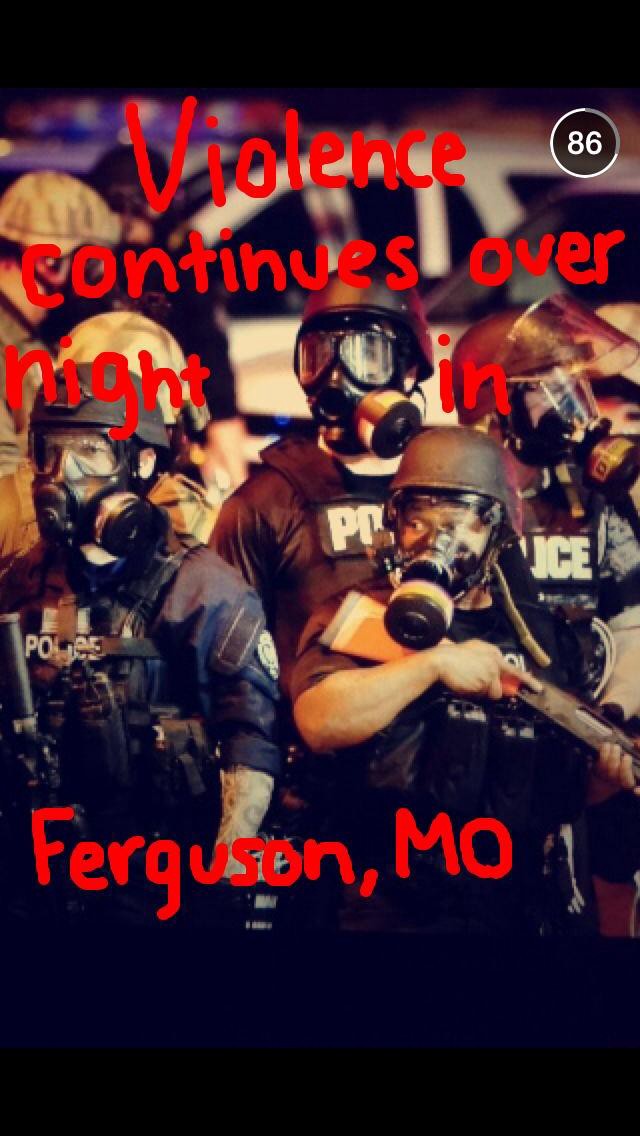
NowThisNews was started a couple years ago as a “brand new video network built from scratch for people who get their news on mobile devices and through social streams.” It was given five million dollars. Its early videos were short YouTube-style news bulletins; most of the old embeds seem to be gone. Now, a few PIVOTS later, the company is focusing on publishing news directly to apps, including Vine and Instagram. This concept — bypassing websites, going directly to other companies’ channels — is something that a lot of people will start trying over the next year, because the internet is broken.
NowThisNews is also publishing directly to Snapchat, the ephemeral texting and video app. Here is what Snapnews looks like in its primitive form: A ninety-second reel, divided into small units, each composed by finger or stylus. Who knew! This is NowThisNews’s Monday stream in its entirety:
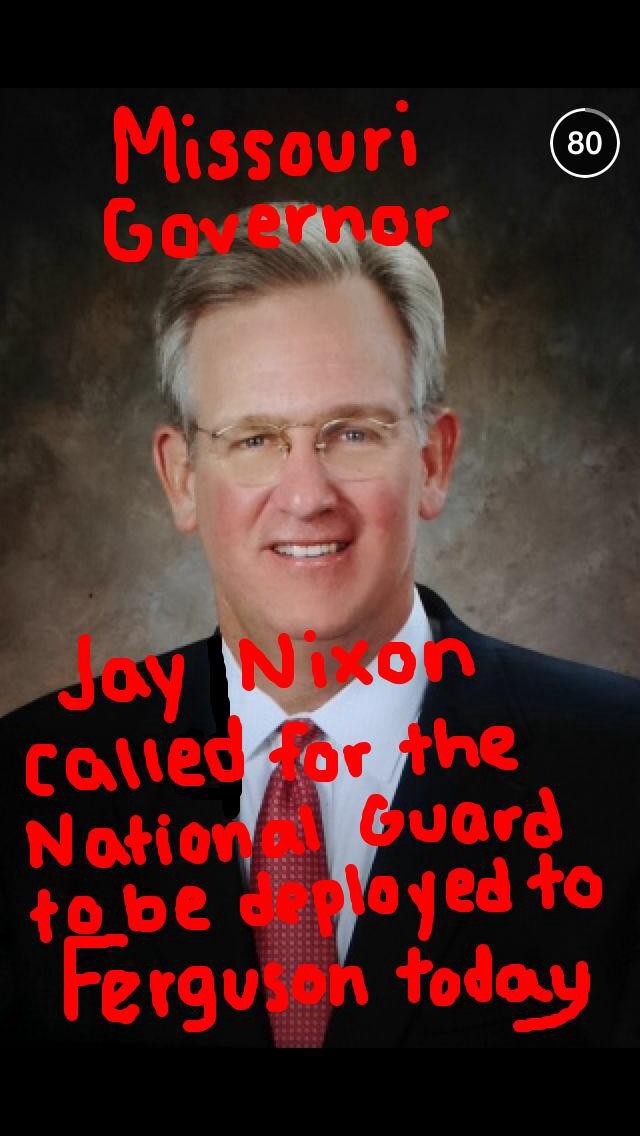
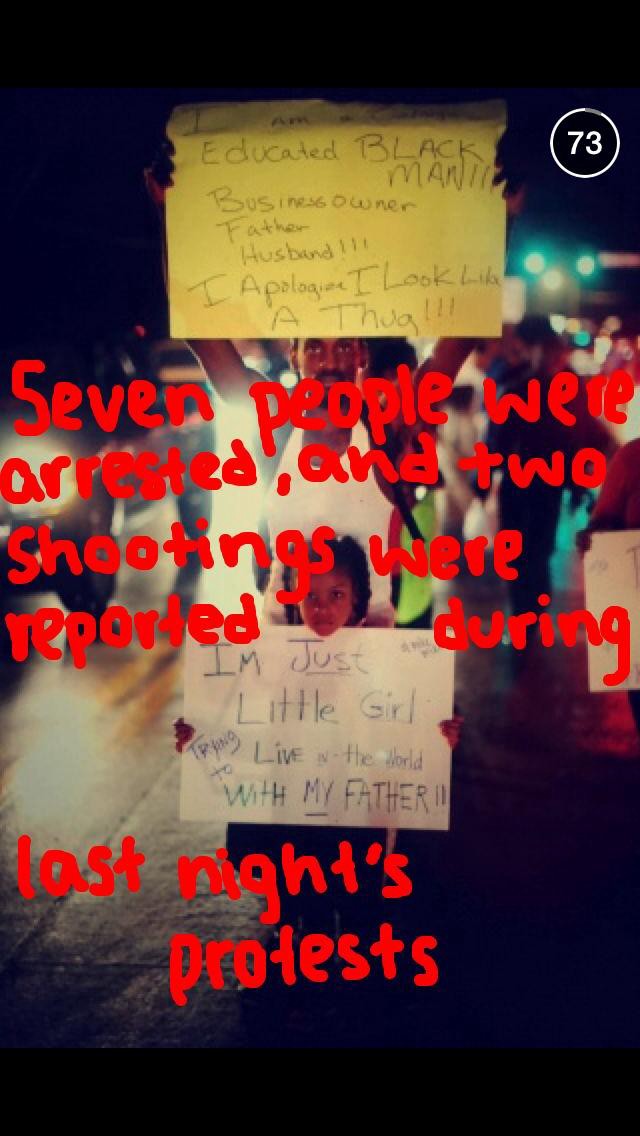
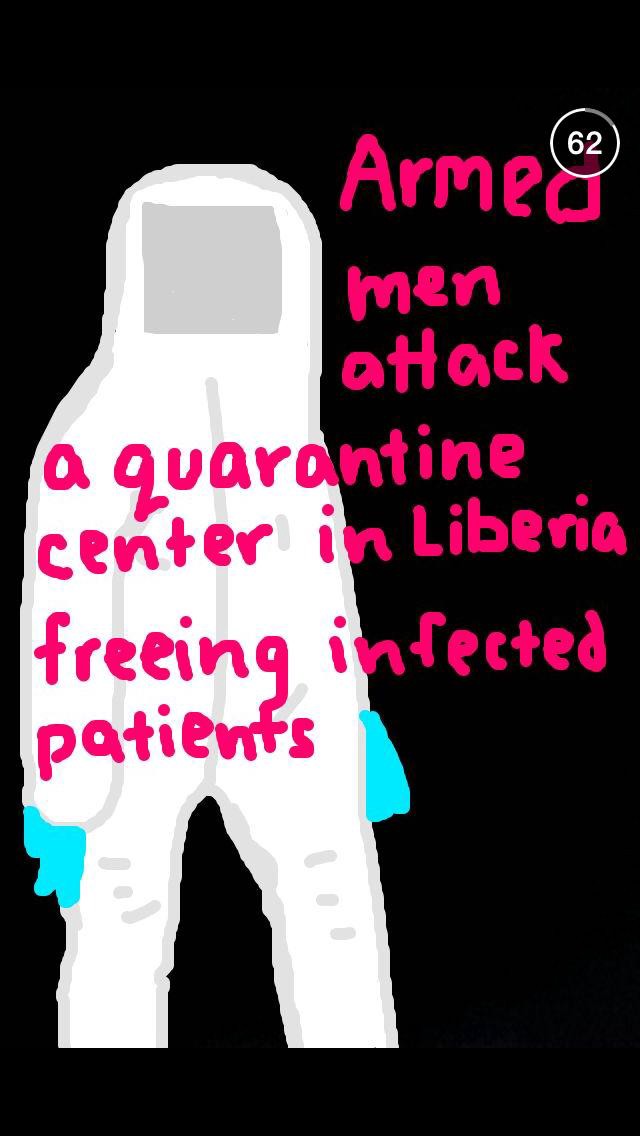




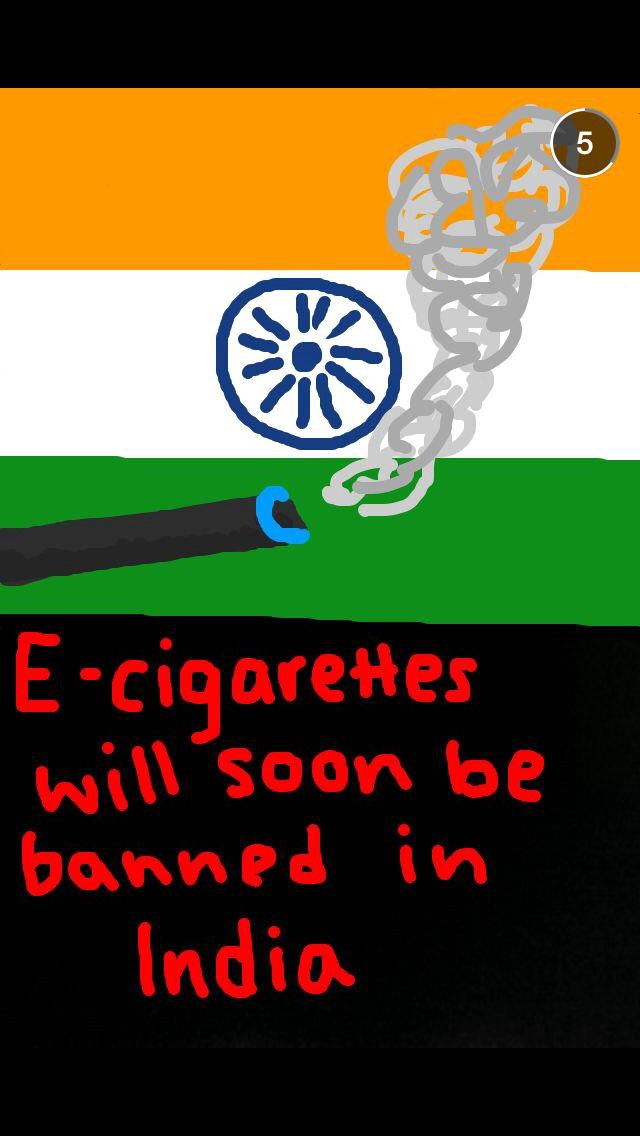
On one hand this is literally finger-painting. On the other, it’s not not news.
Three Lost Days at the Biggest Architecture Show in the World
by Michael Eisenbrey
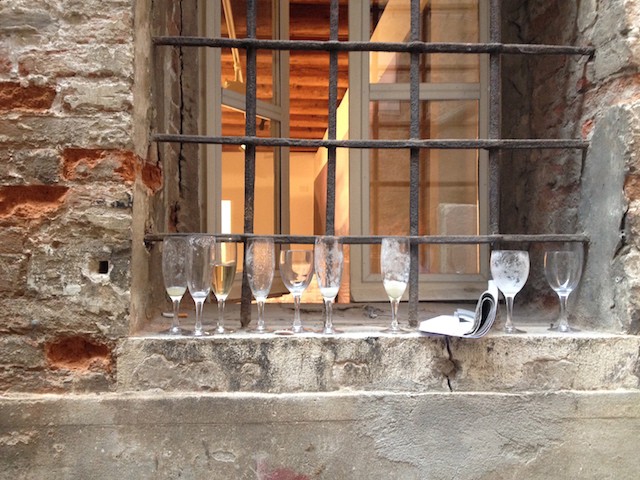
People often say that their hometowns or favorite cities are unique. “There’s no place like New York,” they declare. This is true, up to a point — no two cities are exactly alike — but, broadly speaking, it’s nonsense. Almost every modern city is like New York, because nearly every city is substantially like every other city: There are traffic jams and suburbs and hip, formerly industrial neighborhoods and decaying ones. But Venice? Venice is different. There’s no place like Venice.
The same quality that made the Queen of the Adriatic a world power in medieval and Renaissance Europe — her amphibious nature, unassailably positioned out in a lagoon, her finger on the pulse of Mediterranean trade — has made her a singularly ornamental city in the twenty-first century. Some old imperial capitals have sprawled uninterrupted into modern metropolises, like London and Moscow, while many of Venice’s onetime rivals have shrunk into sleepy little provincial resorts, like the Republic of Ragusa — now Dubrovnik, Croatia — or developed into modern centers of trade and industry, like La Serenissima’s nemesis, Genoa. Venice is too big and spectacular to fade away, too constrained to sprawl, too peculiar to reinvent itself. It’s a relic, left behind by the shifting currents of trade and history: as Portugal and Spain opened naval routes to Asia and the Americas, Venice went from being a crossroads of international trade to a relative backwater; as technology advanced, the Arsenale went from being the world’s greatest and most sophisticated industrial facility to an antiquated shipyard incapable of launching modern vessels.
So today, Venice relies overwhelmingly on tourism; half of the city’s economic activity is directly tied to it, and almost everything else relies, if indirectly, on tourists’ money. The one substantial sector of the economy that isn’t tourism-related is education, and at the intersection of tourism and the academy lies the city’s modern specialty, cultural events — the world-famous film festival, boat races, conferences, and the Biennale.
When somebody says “Venice Biennale,” you probably think of the Art Biennale, picturing great hordes of glamorous art-world people drifting from debauched party to debauched party, Bellinis in hand. Maybe you read Jeff in Venice, Death in Varanasi? The Architecture Biennale is a little different. There are still some glamorous, fashionable art-world types, but replace about seventy percent of them, in your mind’s eye, with frumpy, middle-aged white guys. Then replace all those Bellinis with Aperol spritzes and tone down the revelry; people are relatively sober, treating the occasion more like a professional conference than a carnival.
This year’s Architecture Biennale has received strong reviews. Yet when I was there, during the opening, few people — even the journalists — were actually paying attention to the exhibitions. Festivalgoers often seemed to breeze through an entire pavilion in two minutes. Nobody appeared to be reading anything. At first, I was indignant. Why bother coming? The free prosecco? Later, I became sympathetic. Later still, I became just like them. If you have an invitation to the opening, you have just three days to see the two main shows — one at the Arsenale and one at the Giardini — along with some sixty-odd national pavilions scattered around the city. Even seeing half of the Biennale in three days would be difficult. My girlfriend and I slogged through the big show at the Arsenale, Monditalia; breezed through parts of Rem Koolhaas’s show, Fundamentals, at the main Giardini pavilion, on our way to a magazine launch; and visited seventeen national pavilions, which had been tasked by Koolhaas with assessing modernism’s legacy. We zipped through the Canadian pavilion in about twenty seconds early one evening. “This looks good,” declared my girlfriend, “but boring. I need a drink.” We went to the Israeli pavilion for some prosecco. Then we hit up the Nordic pavilion for more. Then we bought some Aperol spritzes. Then we went home.

A few pavilions stood out. The Golden-Lion-winning Korean pavilion was engaging and thought-provoking, packed with maps, models, graphs, and films that probe the politics, geography, and architecture of the two Koreas. Though it didn’t offer a plan to reunite the nations, it did offer something constructive: a fresh perspective on Korea, a view of the peninsula not as a divided war zone but as a single nation. The Nordic pavilion, which highlighted Cold-War-era Scandinavian architecture in East Africa, and the Dutch pavilion, a retrospective on Jaap Bakema’s work and philosophy, were reminders of the ambition and optimism of postwar modernism — two things that are sorely lacking in architecture and public life in general today. And the Russian pavilion blew everything else out of the water. It’s a wildly inventive fairground that takes a better core idea than most pavilions — stripping Soviet modernism of its Communist stigma and revisiting it to look for contemporary applications — and presents it in an engaging, playful way.
But the captivating prose at Russia’s exhibition was an exception. Most of the Biennale was unambitious; some even seemed unfinished. At the Israeli pavilion, the wall text declared that Israeli cities are characterized by their hybrid of urban and suburban patterns; on the floor, robots doodled neighborhood plans and maps in giant sandboxes. No connection between the text and the robots was elaborated. The Spanish pavilion consisted of several rooms of attractive, large-format photographs of the interiors of contemporary Spanish buildings. The text introducing the exhibition was complete gibberish: three paragraphs of word salad about dialectical this, the vindication of that, and “maximized intensity.” What did it say about Spain, modernism, or architecture? Who knows? The German pavilion assembled elements of the Kanzlerbungalow — the old West German White House — without any clear context. I couldn’t tell you whether the architectural elements were replicas or whether the bungalow was disassembled and flown down from Bonn, to say nothing of what it was supposed to mean.
Typos abounded, and punctuation was frequently missing (sometimes literally: letters had fallen off the wall and, perhaps stuck to the bottom of somebody’s shoe, been carried away). The charming Danish exhibition, for instance, was marred by poorly edited wall text. One piece referred to the great Roman engineer and architect “Vitrovius.” This is something like a museum exhibit about baseball referring to Babe Roth or one about psychotherapy to “Sigmond Freud.” Problems like these characterized much of the Biennale. It wasn’t just quantitatively overwhelming — it was qualitatively underwhelming too. Nowhere was this more evident than at the British pavilion, a hazy exercise that pushed Byron, A Clockwork Orange, the London Blitz, and J. G. Ballard into the same frame, squinted at them, and, having nothing substantive to say, invited the visitor to connect the dots. “It doesn’t offer answers,” acknowledged the Guardian’s Rowan Moore in a glowing review, “but the questions it raises are pertinent. You couldn’t ask for more than this.” Can’t we? The leading questions raised by the British pavilion — isn’t modernism dead? hasn’t social housing failed? — are a tacit endorsement of the Tories’ agenda: burying the welfare state, leaving the poor to fend for themselves, and celebrating this neglect as “devolution of authority” and DIY-ism (Owen Hatherley, a staunch defender of modernism and public housing, left the curatorial team in March, citing differences of opinion).
The current fashion for disowning responsibility and social engagement, whether it comes cloaked in TED-born buzzwords or naked as the callousness of architecture’s Werner von Braun — “If it’s not on the blueprints, who cares where the slaves bleed? It’s not my department, says Zaha Hadid” — might help explain why the Biennale’s curators made such an inadequate effort to communicate their ideas, such as they are, to the public. This is unfortunate. Architecture is ever-present in our lives: everybody has an opinion about the new World Trade Center or the old Penn Station. Yet there’s little dialogue between the public and the architecture world.
Architecture’s largest and most public event needs to do more than just go through the motions. The Biennale, unfortunately, seemed to be driven not by passion or a desire to communicate, but by a sense of obligation. Every other year, it’s up to architects to fill the enormous yawning Arsenale galleries, regardless of whether anybody has worthwhile ideas to occupy them. Perhaps an ornamental city is simply an ill-omened venue for an event celebrating the most functional of arts. Venice may always be trapped in the past, but the Biennale should be at the forefront of a conversation about architecture’s future.
Michael Eisenbrey is a writer and editor in Berlin.
Top photo by author; bottom photo by Darrel Ronald
Bethany Beach, Delaware, August 17, 2014

★★★★ Blue gaps opened in the cloud cover. The little glimpse of ocean off through the pines was gray. The sun burned through on the way to the farmer’s market, making the walk back bright and hot enough for the children to complain about. Out on the beach, the waves spread cool air as they broke. Now the water was the green of good olives, and where it broke it was the green that appears now in late-rmodel cars. The swells were gentle, though people still swarmed the water with their artificial floating planks, sub-surfboards, as if some excitement might happen. A wind roared over wet ears on the way back up onto the shore, and a gust uprooted the beach umbrella and flung it five or ten yards, where it hit a stranger from behind. Inland, crape myrtles were in bloom on the supermarket lot. Even on the barren asphalt, the heat was less than painful. A gray cloud moving through the blue released a drop or three of rain as the grill smoked and fought to get going. The wind kept the smoke moving to every quarter. The clouds drifted briskly. A pile of them out to sea began to turn purple and gold.
Fifty Years Before Ferguson
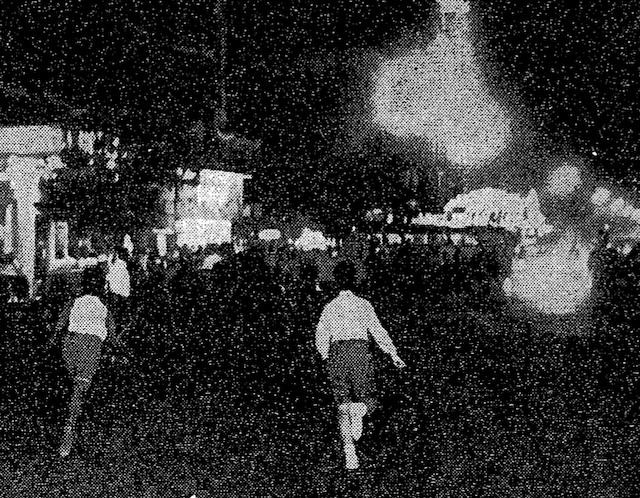
How the media talked about a dead teenager, fifty years ago last month:
The shooting occurred at 9:20 A.M. outside a six-story white brick apartment house at 215 East 76th Street, opposite the Senator Robert F. Wagner Junior High School, where summer school classes were in progress
The dead boy was James Powell, a student at the school, who lived at 1686 Randall Avenue, the Bronx. The police said the youth had been shot twice, in the right hand and in the abdomen, by Lieut. Thomas Gilligan of Brooklyn’s 14th Division.
The trouble began when Patrick Lynch, superintendent of the building at 215 East 76th Street, sprayed water on three youths, while he was washing down the sidewalk, according to Deputy Chief Inspector Joseph Coyle.
…
“The lieutenant warned him but the youth raised the knife,” [said Coyle].
…
Inspector Coyle said that Lieutenant Gilligan had been cut on a finger as he and Powell closed in on each other.
…
Lieutenant Gilligan, who is 36 years old and lives in Manhattan, has received 19 citations for outstanding police work since he joined the force.
…
Shirley Robinson, a 14-year-old Negro student at the Wagner summer school, said that the superintendent had provoked the boys by deliberated spraying water on them.
“The superintendent then said — and I heard him — ‘I’m going to wash all the black off you.’”
…
“I saw the boy go into the building and he didn’t have any knife then,” she said. “When he came out, he was even laughing and kind of like running.”
…
Officials of several civil rights groups went to the East 67th Street station house to learn the facts of the shooting.
…
Neighbors and friends described the youth as “a nice guy” who never got into trouble
— NEGRO BOY KILLED; 300 HARASS POLICE; Teen-Agers Hurl Cans and Bottles After Shooting by Off-Duty Officer Lieutenant Kills Negro Youth, The New York Times, July 17th, 1964.
About 200 Negro teen-agers conducted an animated but orderly demonstration in Yorkville yesterday to protest the fatal shooting on Thursday of a 15-year old Negro boy by an off-duty police lieutenant.
…
The police said the boy had gone after the lieutenant, who was in civilian clothes, with a pocket knife and had ignored a warning to stop.
They said the youth was emerging from the building after having chased the superintendent into an apartment. The superintendent, Patrick Lynch, was said to have inadvertently sprayed water on young Powell and several other Negro youths as he hosed down the sidewalk in front of the building.
…
As the crowd of teen-agers grew, Chris Sprowal, chairman of the Downtown chapter of the Congress of Racial Equality, grabbed a megaphone and cautioned the demonstrators “to behave like ladies and gentlemen.”
“People around here just wanted you to get into trouble,” the tall, slender Negro yelled.
…
The police said yesterday that young Powell had been in some trouble, and had a juvenile record.
— TEEN-AGE PARADE PROTESTS KILLING; 200 March in Yorkville as Police Watch — Shooting of Boy Being Investigated, The New York Times, July 18th, 1964.
Shots fired into the air by policemen to disperse the milling crowds echoed through streets littered with overturned garbage cans and broken glass
…
The men from the tactical patrol force sent to the scene are members of a group of about 200 handpicked men, all over six feet tall, all trained in judo and all under 30 years of age.
— THOUSANDS RIOT IN HARLEM AREA; SCORES ARE HURT; Negroes Loot Stores, Taunt Whites — Police Shoot in Air to Control Crowd, The New York Times, July 19th, 1964.
The slain boy’s mother, Mrs. Annie Powell, wept as she arrived at the Levy and Delany Funeral Home… She became hysterical as she neared her son’s coffin.
…
“The fact that the boy was killed is a terrible thing,” a woman said on the corner of Lexington Avenue and 68th Street. “But they aren’t helping things by boing around the streets like wild animals.”
— Mother Hysterical at Boy’s Bier, The New York Times, July 19th, 1964
Early, today, James Farmer, the national director of the Congress of Racial Equality, said he was attempting to reach Governor Rockefeller to discuss the possibility of having the National Guard sent into Harlem. Governor Rockefeller, vacationing in Wyoming, was unavailable.
…
Just before the funeral began, bottles began crashing to the street. Suddenly there were shrieks from the corner of Seventh Avenue and 132d Street, and patrolmen, waving nightsticks, charged into crowds that were pouring out from behind barricades.
The crowd broke up when shots were fired into the air. Three busloads of specially trained anti‐riot policemen drew up and helped put down the outburst, but not before one man was knocked to the ground.
…
Later three persons were wounded by gunfire and three policemen were injured in fighting at 129th Street and Lenox Avenue. The pattern was the case that prevailed much of the night: missiles and gasolinefilled bottles thrown at the police, with shots returned.
— VIOLENCE FLARES AGAIN IN HARLEM, The New York Times, July 20th, 1964.
At 12:30 A.M., in a blur of debris, racing mobs and gunshots, a policeman crouching beside a patrol car on Lenox Avenue, just north of West 125th Street, yelled to his partner: “Are we shooting at them?”
— Policemen Exhaust Their Ammunition In All‐Night Battle, The New York Times, July 20th, 1964.
Moreover, there will have to be even harder work in the future if the fundamental tensions behind the passions that began exploding last Saturday night are to be eradicated.
— Editorial: Tragedy in Harlem, The New York Times, July 20, 1964.
“Now it is a case of outright scare tactics,” he said. “This won’t work, because the Negro is not afraid. If the tactics are not changed, this could escalate into something very, very serious.”
— Malcolm X Lays Harlem Riot To ‘Scare Tactics’ of Police, The New York Times, July 20th, 1964.
Only a dozen persons, relatives and close friends of the family, attended the brief graveside services, conducted by the Rev. Theodore Kerrison, pastor of the St. Augustine Baptist Church in Harlem.
…
Mrs. Annie Powell, the mother of the boy, shouted at one point during the service, “Oh God, look how I brought my boy to you.”
…
Overhead a police helicopter, outlined against the overcast sky, kept a vigil.
— Few Present as Boy Shot by Policeman Is Buried, The New York Times, July 21, 1964.
After the marchers had been dispersed, and as the daylight turned into dusk, large groups of people milled about 125th Street, the main business street in Harlem.
— VIOLENCE ERUPTS FOR THIRD NIGHT; Attacks Draw Police Fire in Harlem Again — Outbreak Follows Brooklyn Rally Violence Erupts for Third Night After a Peaceful Day in Harlem, The New York Times, July 21st, 1964.
I believe that the overwhelming majority of Americans will join in preserving law and order and reject resolutely those who espouse violence no matter what the cause. Evil acts of the past are never rectified bu evil acts of the present. We must put aside the quarrels and the hatreds of bygone days; resolutely reject bigotry and vengeance; and proceed to work together toward our national goals.
— Statement by President Johnson, July 21, 1964.
About 250 white teen‐agers hurled rotten eggs last night at l6 members of the Congress of Racial Equality who were picketing Police Headquarters.
…
“Go back to Harlem,” some shouted.
— Teen‐Agers Throw Eggs at CORE Unit Picketing the Police, The New York Times, July 22nd, 1964.
— Statement on Harlem Riot, Mayor Robert F. Wagner, July 21st, 1964.
Acting Mayor Paul R. Screvane asserted yesterday that the Harlem disorders of the last several days had been incited in part by “fringe groups, including the Communist party.”
Mr. Screvane hailed President Johnson’s action in assigning Federal Bureau of Investigation agents to check possible violations of Federal statutes.
The Acting Mayor suggested that the agents might investigate the source of money for some rallies and some “very inflammatory … anti‐American … and seditious statements.”
— SCREVANE LINKS REDS TO RIOTING Says Other ‘Radical Groups’ Also Incited Violence — Mayor Returns to City, The New York Times, July 22nd, 1964.
The recent violence in Harlem, Mr. [Adam Clayton] Powell (no relation) told a news conference is “not a race riot.” He said the disturbances represented “the built‐in, continuing resentment of the black people of the black ghetto of New York against the Police Department of New York and its policies of a half‐century ago.”
— Powell Says Riots Can End if Mayor Meets 5 Demands, The New York Times, July 23rd, 1964.
Relative peace returned to the city last night for the first time since rioting and looting made Harlem a battlefield last Saturday night. Only isolated incidents broke out
— Relative Calm Is Restored To Riot‐Torn Areas Here, The New York Times, July 24th, 1964.
An aide to Mr. Rockefeller said the National Guard had taken certain steps to make itself more readily available if it is needed.
— POLICE BAN MARCH IN HARLEM TODAY; SPONSORS DEFIANT; Leftists Still Plan Protest on Department — Rights Chiefs to Discuss Riots, The New York Times, July 25, 1964.
The race struggle had reached a climax and no immediate way out was indicated.
— ‘Hot Summer,’ The New York Times, July 26th, 1954.
